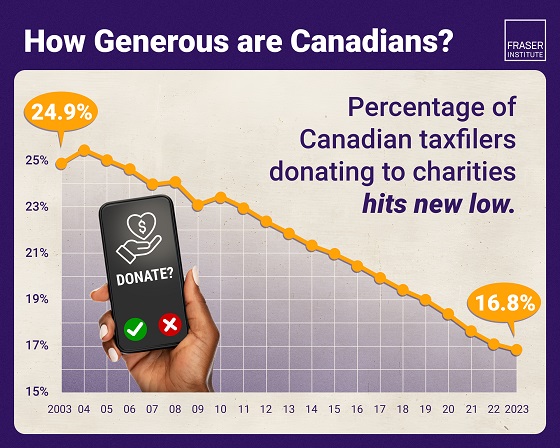Also Interesting
E-Gaming Revolution: The Convergence of Virtual Entertainment and Traditional Sports

Discover how the e-gaming industry is reshaping entertainment and competition across multiple sectors. From virtual casinos to professional esports leagues, this article explores the latest trends, technological advancements and economic impact of digital gaming. You’ll learn about the key players, emerging markets and what the future holds for this rapidly evolving landscape that’s bridging the gap between digital and physical sports.
The world of e-gaming is experiencing unprecedented growth, transforming how people play, compete and even gamble. With the global pandemic accelerating the shift towards digital entertainment, the industry has seen a surge in both casual and professional gaming. This article delves into the exciting developments in e-gaming, examining its various facets and implications for the future of interactive entertainment, including the introduction of a new online casino seemingly every week.
The Virtual Casino Boom
The online gambling sector has witnessed a remarkable expansion in recent years. Players now have access to a vast array of gaming options from the comfort of their homes. These virtual platforms offer everything from traditional card games to innovative slot machines, often featuring cutting-edge graphics and immersive experiences that rival their brick-and-mortar counterparts.
The rise of cryptocurrency has further fueled this growth, providing players with additional payment options and enhanced privacy. This rapid expansion has prompted discussions about responsible gaming practices within the industry.
Esports: Bridging Digital and Physical Sports
Competitive gaming, or esports, has evolved from a niche hobby to a global phenomenon. Professional leagues now attract millions of viewers and offer substantial prize pools, rivaling traditional sports in terms of popularity and revenue generation. Games like League of Legends, Dota 2 and Counter-Strike: Global Offensive have become household names, with tournaments filling arenas and broadcasting to audiences worldwide.
Interestingly, the line between esports and traditional sports is blurring. Many professional sports teams and athletes are now investing in or creating their own esports teams, recognizing the potential for cross-promotion and fan engagement.
The Impact on Traditional Media and Sports Broadcasting
The surge in e-gaming popularity has not gone unnoticed by traditional media outlets and sports broadcasters. Major networks and streaming platforms are increasingly incorporating esports content into their programming, recognizing the potential to capture younger audiences.
This convergence of gaming, traditional sports, and mainstream media is creating new opportunities for advertisers, content creators and technology companies alike.
Technological Advancements Driving Growth
Behind the scenes, technological innovations are propelling the e-gaming industry forward.
Virtual reality (VR) and augmented reality (AR) are opening up new possibilities for immersive gaming experiences, while improvements in internet infrastructure, particularly 5G networks, are enabling smoother online play and reducing latency issues.
These advancements are not only enhancing gaming experiences but also finding applications in sports training and fan engagement.
The Future of E-Gaming and Its Impact on Sports
As the industry continues to evolve, experts predict further integration of e-gaming into everyday life and traditional sports.
From educational applications to fitness-focused games, the boundaries between gaming and other sectors are becoming increasingly blurred. Sports simulations are becoming so realistic that they’re being used as training tools for professional athletes.
The potential for blockchain technology to revolutionize in-game economies and ownership of digital assets is also an area of significant interest and development, with implications for both gaming and sports memorabilia markets.
The e-gaming landscape is dynamic and full of potential. As technology advances and societal attitudes towards gaming continue to shift, we can expect to see even more innovative and engaging experiences emerge.
Whether you’re a casual player, a dedicated esports fan, or a traditional sports enthusiast, the future of digital gaming promises to be an exciting journey filled with new opportunities and challenges that will reshape the entire sports and entertainment industry.
Also Interesting
Patterns of Play in Québec: How Smartphones Are Powering Online Casino Growth

Mobile has become the default screen for entertainment in Québec, from streaming to short-form video to bite-sized gaming. When I look at how people actually spend their downtime, it’s clear that the phone wins because it fits around life—on the metro, in a coffee line, or on the couch while a show runs in the background. In this post, I’ll break down why mobile-first habits are accelerating online casino growth, the features that keep players returning to their phones, and the practical settings that make play smoother and more intentional.
Why Québec Is Moving to the Small Screen
Phones shape behavior through short, repeatable “micro-sessions.” A spare two minutes turns into a quick spin, a side quest, or a daily check-in reward. This rhythm aligns with broader Canadian trends: internet and mobile use remain near-universal, and social-style engagement has trained us to prefer fast, thumb-driven loops. Reports tracking Canada’s digital life show high penetration of mobile connections and heavy social usage—both predictors of strong mobile gaming engagement.
Design also matters. Modern casino apps and mobile sites lift cues from social feeds—persistent nav bars, swipeable cards, haptic taps, and instant feedback. The result is a UX that feels familiar even if the game is new. Hybrid monetization (in-app purchases alongside ad-supported rewards or subscriptions) also keeps the experience flexible for different budgets and play styles.
Signals From the Gaming and Payments Ecosystem
Canadian gamers are increasingly incorporating mobile devices into their weekly routines. Recent coverage notes that a substantial majority of players use smartphones weekly for gaming, reflecting the convenience of pick-up-and-play formats. That preference supports casino-style content, where quick sessions and event-driven bonuses are efficient.
Payments are evolving alongside play. The latest national payments research highlights steady growth in digital methods and mobile-friendly transactions, with tap-and-go habits extending to in-app expectations. For players, this translates into faster top-ups, robust device security options (such as biometrics), and fewer abandoned deposits.
The Mobile UX That Keeps Players Engaged
Excellent mobile casino experiences share a few traits. First, they compress decisions: big buttons, readable odds and win potential, and minimal required text. Second, they personalize quickly—surfacing “recently played,” daily streaks, or seasonal events up top. Third, they respect session length, offering fast load times, one-handed play, and clear exit points, so it’s easy to stop when you planned to.
From my own testing and reviews, the stickiest flows do three simple things well:
- Surface momentum: Onboarding ends with a playable moment rather than a dead-end settings screen.
- Simplify payments: Wallets remember preferred methods and confirm with Face ID or fingerprint.
- Reward cadence: Progress bars, level-ups, and time-limited events make short sessions feel meaningful.
A Quick, Local Guide for New and Returning Players
If you’re exploring mobile options and want a single page that maps the landscape for Québec readers, start with a detailed guide to online casinos in Québec—it’s a straightforward overview of platforms, banking, and play considerations. The resource provides tools and comparisons that many readers find helpful, and it originates from Gambling Nerd Canada, a brand known for its practical breakdowns rather than hype.
Privacy, Performance, and Control on Your Phone
Before a long session, think like a power user. Turn on low-power mode, reduce background refresh for nonessentials, and enable biometric locks for your wallet app. Use notification summaries so bonuses and reminders arrive on your schedule, not in scattered pings throughout the day. If privacy is top of mind, note the broader consumer shift toward privacy-aware browsing and app choices—an indicator that many users want speed without sacrificing control.
Practical Settings I Recommend
Start with a one-time setup and revisit monthly:
- Biometric approvals: Fingerprint or Face ID for payments and account access.
- Focus modes: A “Play” focus that mutes noncritical apps prevents distraction.
- Data caps and Wi-Fi assist: Ensure stable play when switching networks.
- Notification batching: Keep promotional pings contained to a scheduled summary.
- Accessibility tweaks: Larger text and stronger contrast reduce mis-taps in fast games.
What’s New in 2026: Features to Watch
Mobile gaming in 2026 is doubling down on personalization and live-service content. Think dynamic events, social play hubs, and cross-platform syncing so you can pick up progress anywhere. Industry tracking points to hybrid monetization and more innovative analytics guiding these updates, which typically means more tailored offers and seasonal content drops. For players, the upshot is fresher content and smoother progression across short sessions.
Québec’s mobile-first reality isn’t about bigger screens or faster chips—it’s about how phones fit our days. Short, satisfying sessions, fluid payments, and personalized content make the experience feel effortless. If you dial in a few device settings and use trusted resources to compare options, you’ll get the convenience you want without the clutter you don’t.
Also Interesting
When Chats Drag On for Months and Go Nowhere – And What to Do About It

We’ve all had that one chat: lots of jokes, some flirting, maybe even deep talks… and yet you never actually meet. Or call. Or do anything.
It feels like something, but also like nothing. Let’s gently call it what it is: a situationship in your phone.
Why We Get Stuck in Endless Chatting
Some common reasons:
● Fear of rejection if you move it offline.
● It’s a comforting distraction when you’re lonely or stressed.
● You’re both busy and don’t want to prioritize each other yet.
● One or both of you like the ego boost more than the person.
Here’s a quick pattern table:
Pattern What’s usually going on
Lots of texting, no concrete plans Avoidance or low real-life interest
Strong flirting, zero follow-through Validation more than true intention
“We should meet sometime” on repeat Vague comfort zone, not real action
How Long Is “Too Long” Without Meeting?
There’s no exact rule, but for most people:
● 1–2 weeks of active texting → reasonable to suggest a call or date.
● 4+ weeks of frequent texting, zero effort to meet → something’s off.
If your “relationship” is starting to feel like a pen pal romance, it’s time to shift.
How to Move Things Forward (or End It)
You can keep it very simple:
● “I’m enjoying chatting with you. Want to grab a coffee next week and see how this feels offline?”
● “I’m not great at endless texting — would you be up for a quick video call sometime via online dating for singles?”
If they dodge vague excuses again and again, you have your answer.
Giving Yourself Permission to Let It Go
Ending a long chat connection can feel weirdly like a breakup, even if you never met. It’s still emotional energy.
You can say:
● “I’ve appreciated our chats, but I’m looking for something that can move into real life. I’m going to step back from this.”
Then mute, archive, or delete. And yes, you’re allowed to feel a bit sad and still know it was the right call.
Your Time Is Valuable
At the end of the day, your dating life is part of your actual life, not a separate mini-game.
You deserve:
● Conversations that lead somewhere
● Dates that feel safe, curious, and real
● Relationships (or explorationships) that respect your energy
-

 COVID-192 days ago
COVID-192 days agoTrump DOJ seeks to quash Pfizer whistleblower’s lawsuit over COVID shots
-

 Crime2 days ago
Crime2 days agoU.S. seizes Cuba-bound ship with illicit Iranian oil history
-

 Business1 day ago
Business1 day agoAlbertans give most on average but Canadian generosity hits lowest point in 20 years
-

 International2 days ago
International2 days agoMarjorie Taylor Greene’s ’60 Minutes’ interview reveals power struggle between populists and RINOs
-

 Censorship Industrial Complex1 day ago
Censorship Industrial Complex1 day agoOttawa’s New Hate Law Goes Too Far
-

 Business1 day ago
Business1 day agoTaxpayers Federation calls on politicians to reject funding for new Ottawa Senators arena
-

 Bruce Dowbiggin1 day ago
Bruce Dowbiggin1 day agoCarney Hears A Who: Here Comes The Grinch
-

 Daily Caller2 days ago
Daily Caller2 days agoUS Supreme Court Has Chance To End Climate Lawfare






